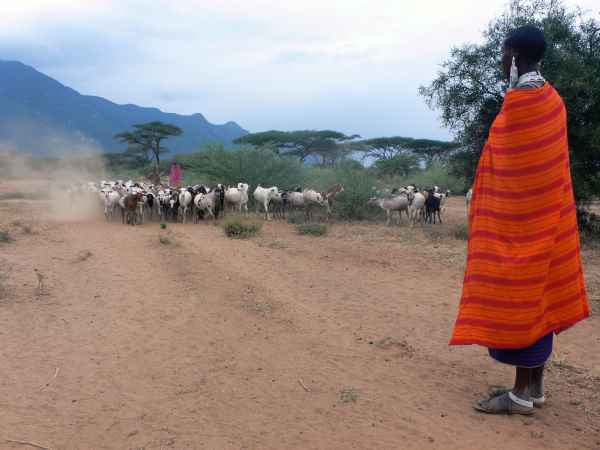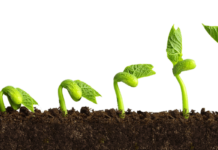By; Matthew Margetts,the Director of Sales and Marketing at Smarter Technologies.
Agricultural development has the potential to boost shared prosperity, end extreme poverty and feed the world’s growing population. In fact, growth in the agriculture sector is two to four times more effective in raising incomes among the poorest individuals compared to other sectors. But how can farmers in developing countries overcome challenges such as climate change to feed growing (and often under-nourished) populations?
With a range of practical and economic challenges facing smallholder farmers, the introduction of smart technologies to farm management can make a meaningful difference to their daily lives. Digitisation holds the key here, a process which is backed up in a report last year from The Centre for Agricultural and Rural Cooperation (CTA), an institution focusing on poverty reduction through the modernisation of smallholder farming.
Linking farmers to multimedia services and smart technology has so many potential applications in developing countries, and the evidence too is suggesting that this can be achieved through innovation and knowledge sharing. In fact, Africa’s digital agriculture is growing, with the number of farmers subscribed to digital services having grown by 40-45% per year in the last three years. Simple, digital and smart technologies are enabling streamlined disease control and herd management. This, in turn, has a potent knock-on effect when it comes to profitability, productivity, and reduced pressure on farmers.
Consumer demand puts increased pressure on farmers
According to the WHO, we can expect annual worldwide meat production to increase to 376 million tonnes by 2030 to meet nutritional demands. While this raises inevitable environmental concerns, it also puts untold pressure on farmers, who are responsible for meeting these demands. And in Africa, the rapid growth of meat consumption (South Africa contributes to 20% of world meat production) is set to provide not only attractive opportunities for investors, but also in tech which makes its production and management more efficient.
Take for example the opportunities in animal disease, which decreases livestock productivity by up to 30% according to Deloitte, who also estimates that animal losses could be reduced by at least 65% through smart animal health and monitoring. Against this backdrop, there is a call for cost-effective, easily implemented smart solutions to meet the need for global increased yields and improved sustainability. While this has widespread supply benefits, there are a number of advantages farmers will simultaneously enjoy through the functionality of these technologies.
And, if these be continue to be successfully implemented, the annual revenues stemming from this in developing countries are there to support this need too, which are estimated at about $140 million.
The challenges of the traditional approach
Traditional cattle disease management has a heavy reliance on the farmer and labourers to monitor and act upon (sometimes difficult to discern) symptoms they observe. When time is of the essence in containing disease, incorrect diagnosis and treatments can have a dire effect. This is especially so when symptoms may have gone unobserved for some time. Additionally, delays in call-outs are not uncommon, particularly in developing countries where distance and reach of veterinary services can be problematic, and the cost of veterinary intervention can have a negative impact on profitability.
An extension of this is veterinary involvement in fertility and calving. This too attracts expenses, as well as the logistical implications of rounding up cattle for examination. In all, the guesswork around cattle health and fertility results in unnecessary losses.
And when examining this among smallholder farmers, paying for veterinary bills may simply not be feasible through monetary concerns, and they end up losing animals to disease and complications. So the increased need for digitisation to help aid the process in these areas is essential moving forward.
The benefits of going smarter
With this cross-section of challenges in mind, farmers have the potential to use insightful data collected from animals to inspire management methodologies which reduce the spread of disease and mortalities. A wide array of solutions exists – from wearable technologies to ingestible hardware. These smart animal health management tools are designed to empower meaningful outcomes through simple integration and actionable, real-time metrics.
Full-time temperature monitoring
One such smart advance is the capability of technology to transmit real-time temperature readings to a remotely accessible dashboard, which is cloud-based and can be accessed on any connected device. This gives farmers the ability to personally monitor even dispersed herds. Instant notifications of undesirable temperature readings mean disease can be timeously detected and contained – and this data can be easily passed on to vets and scientists without the delays and costs of callouts.
One such method is an ingestible bolus for this purpose, realising the value of continuous temperature readings and alerts for farmers. This non-harmful, non-invasive technology has a lifespan of five years and aids farmers in disease management and calving. These simple temperature insights have far-reaching additional advantages. These include a reduced reliance on antibiotics, reduced delays, and a more measured response to diagnosis and disease containment. It is also a cost-effective means of reducing vet and tech spend – as well as labour dependence – for the purposes of cattle health.
Biosecurity and movement
Tracking animal movement and biosecurity are also important considerations for farmers across the world and in developing countries. Tracking collars and similar technology, while not new in the agricultural sector, are working together with smart technologies to achieve precision farming. Additionally, features such as GPS tracking collars, smart sensors and tags can assist farmers in monitoring and ensuring biosecurity through a smart system of access control. Insights on animal movement also have the potential to inform farmers on conditions of listlessness or illness in the field, all of which plays into a broader health strategy that is consistently improving in Africa. Ethiopia’s “80-28” hotline for example, a farmer advisory service, already has a staggering 4m users, the highest on the continent.
Robust record-keeping
With transparency and traceability becoming increasingly important around the question of food safety, smart technologies can also be geared towards effective record-keeping in developing countries. Remote dashboards utilise a digitalised cloud-based platform, personalised to suit individual farmers’ requirements and farm set-ups. Hardware is securely connected to a user’s dashboard to provide reliable solutions to the challenges faced by farmers in the health management of their livestock. In Ghana for instance, online platforms such as Esoko, Farmerline, and Trotro Tractor are already established to provide farmers with accessible services.
The use of automated, objective measurement technologies can assist commercial producers in developing countries to become more efficient and meet market specifications, thus increasing sustainability and profitability. It also assists in improving animal welfare and productivity of smallholder farmers, as well as contributing to economic sustainability in rural areas.
And while these farmers may face untold political, economic, social, cultural and institutional barriers, the tide is turning, and smart technologies can assist in managing day-to-day operations to ensure the future of herd and cattle management now and for the future.









Good news for small holder Farmers.
Comments are closed.